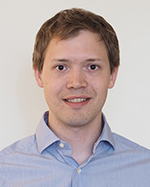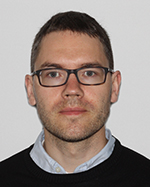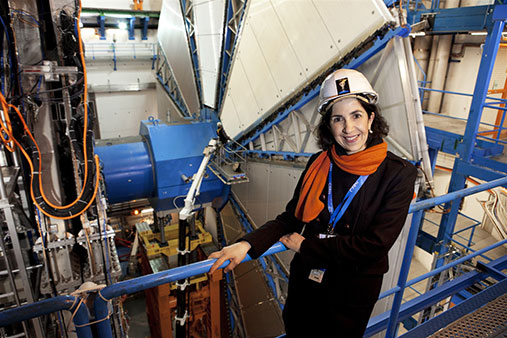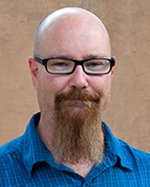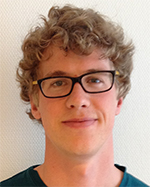Arrangementer - Side 41
Master of Science Humayra Ferdous ved Fysisk institutt avholder prøveforelesning over oppgitt emne: "The history of the recording of the Electrocardiograph - ECG/EKG"
Pat Scott , Imperial College London [slides]
Searches for particle physics beyond the Standard Model come in many forms, from searches for new particles at accelerators to gamma-ray and neutrino telescopes, cosmic ray detectors and ultra-clean experiments deep underground. Efforts to combine multiple search channels in 'global fits' to new physics scenarios typically consider only a subset of the available channels, and apply them to a very small range of possible theories. Astroparticle searches in particular are usually only included in a very approximate way, if at all. In this talk I will review recent progress in improving this situation, and preview some of the future developments and challenges in this field.
Michael Kachelriess, NTNU [slides]
The IceCube Collaboration announced 2012 evidence for the first detection of extraterrestrial neutrinos. Meanwhile, the discovery of a extraterrestrial neutrino flux (of surprisingly large magnitude) has been established. After a review of the basic ideas of high-energy neutrino astrophysics, I discuss possible sources for these neutrinos and their signatures. I discuss the neutrino yield from collisions of cosmic ray nuclei with gas and the possibility that Galactic sources can explain the IceCube excess. I review also the cascade bound on extragalactic neutrinos and its consequences.
Jörn Kersten, Universitetet i Bergen [slides]
Despite the astonishing success of the standard LambdaCDM cosmological scenario, there is mounting evidence for a tension with observations. For example, some measurements indicate that a part of the dark matter is hot. In addition, the observed properties of relatively small galaxies do not quite agree with the predictions by simulations of structure formation.
I will discuss a simple particle physics model containing cold dark matter (DM) and sterile neutrinos. Both are charged under a new gauge interaction. The resulting DM self-interactions and DM-neutrino interactions resolve the problems with structure formation. The sterile neutrinos can account for both a small hot DM component and the neutrino anomalies found in short-baseline experiments.
Anders Kvellestad, UiO
Recently a few small (but intriguing) deviations from Standard Model predictions have been identified in the LHC data, one being an excess in the dilepton spectrum in a CMS search for so-called 'kinematic edges' -- a classic signal of physics models with heavy particles decaying through sequential two-body decays. We present an interpretation of this excess in terms of a supersymmetric model with squarks undergoing such sequential decays down to the lightest neutralino, which is a viable candidate for particle dark matter. The good-fit parameter space of the model is presented, along with predictions for squark production at the upcoming 13 TeV LHC run.
Further, using the above analysis as an example, we briefly comment on the main challenges of confronting complex models like Supersymmetry with experimental results, and present an ongoing effort to overcome some of these challenges.
Årets Nobelpris i fysikk annonseres 7. oktober. Vi ser sendingen sammen.
Marius L. Meyer, UiO
In recent years there has been extensive interest in the study of strongly correlated states of cold atoms motivated by analogies with exotic states known from low-dimensional electronic systems, particularly quantum Hall states. In this talk I will present an analysis of the yrast states of two-component rotating Bose gases using Jain's composite fermion (CF) approach. A particularly simple subset of CF states are found to give very good approximations to the lowest energy states for low angular momenta.
CERN er 60 år og Cinemateket viser dokumentarfilmen "Partikkelfeber" på stort lerret.
Ansatte og studenter ved UiO får billetter til medlemspris!
-A new window on our Space environment: The polarization of the auroral emissions. A French – Norwegian discovery.
Har du lurt på hvordan et renrom ser ut? Interessert i nanoteknologi, solenergi eller forskning generelt? Mikro- og nanoteknologilaboratoriet åpner dørene for publikum!
Kjetil Børkje, UiO
Over the past few decades, tremendous experimental progress has been made to engineer and control artificial quantum systems. The motivation for this type of research will be discussed, both from a fundamental and a technological point of view. Some of the most important recent developments will be presented, with focus on two areas specifically: a) the quest to realize quantum information processing and b) the effort to bring large-scale mechanical systems into the quantum regime. A few examples from my own theoretical contributions to the field of cavity optomechanics will be discussed. Finally, I will try to identify some new challenges going forward.M. Sc. Lars Tore Gyland Mikalsen ved Fysisk institutt vil forsvare sin avhandling for graden ph.d: "Solid Tumour Vascular Quantification: A Histopathology Study of Tumour Endothelium"
M.Sc. Lars Tore Gyland Mikalsen ved Fysisk institutt avholder prøveforelesning over oppgitt emne: "Novel methods for visualisation of cancer cells in the body"
Øystein Elgarøy, UiO
On March 17th this year the team behind the BICEP2 experiment announced the discovery of so-called B-mode polarization in the cosmic microwave background radiation at large angular scales. There is some tension between their claim and the results from the Planck satellitte, but I will assume that it is correct and try to explain why it is important. What is the link between B-mode polarization and the physics of the very early Universe?
Master of Science in Technology Gustav Baardsen ved Fysisk institutt vil forsvare sin avhandling for graden ph.d: "Coupled-cluster theory for infinite matter"
Fabiola Gianotti is a new honorary doctor at the University of Oslo. This is her acceptance speech.
The event is free and open to all, no registration necessary.
Master of Science in Technology Gustav Baardsen ved Fysisk institutt avholder prøveforelesning over oppgitt emne: "Pairing in infinite nuclear systems"
M.Sc. Jeffrey Morgan Holmes ved Fysisk institutt vil forsvare sin avhandling for graden ph.d: "The Protonics project: distributed observations of auroral dayside Doppler-shifted hydrogen emissions"
M.Sc. Jeffrey Morgan Holmes ved Fysisk institutt avholder prøveforelesning over oppgitt emne: "Fifty years of magnetospheric substorm research: historical review and recent developments"
The 3nd International Conference on New Frontiers in Physics (ICNFP2014) will be held 28.07-06.08.2014 in OAC, Kolymbari, Crete.
M.Sc. Maiken Pedersen ved Fysisk institutt vil forsvare sin avhandling for graden ph.d: "Fake lepton determination, Supersymmetry searches in di-lepton final states, and sharing ATLAS data with young students"
M.Sc. Maiken Pedersen ved Fysisk institutt avholder prøveforelesning over oppgitt emne: "The saga of exotic quarkonium states"
Diplom-Physiker Matthias Schrade ved Fysisk institutt vil forsvare sin avhandling for graden ph.d: "On the Oxygen Nonstoichiometry in Thermoelectric Oxides"



